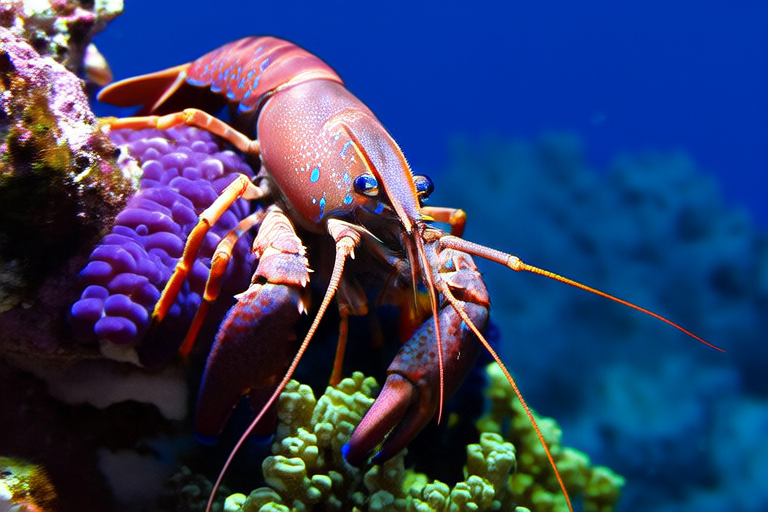Step-by-Step Guide to Keeping Your Coral Shrimp Happy and Healthy
Coral shrimp (Stenopus hispidus) are fascinating creatures that bring a unique charm to any saltwater aquarium. Known for their striking appearance, these shrimp have a distinct white body with red or orange spots, and they sport long, whisker-like antennae. Unlike some other aquarium inhabitants, coral shrimp require specific environmental conditions to thrive. Understanding and meeting their unique needs can significantly enhance their longevity and well-being in your tank.
Setting Up the Ideal Tank Environment
The first step in keeping your coral shrimp happy and healthy is creating an environment that closely mimics their natural habitat. Here’s how you can set up your tank:
- Selecting the Right Tank: Coral shrimp prefer larger tanks, ideally over 30 gallons, which provide ample space for swimming and exploration. A larger volume also helps maintain stable water parameters.
- Substrate and Decorations: Use a fine-grained substrate like aragonite sand to replicate their natural environment. Incorporate live rock and corals, as these provide hiding spots and surfaces for grazing.
- Filtration: Invest in a high-quality protein skimmer to keep the water clean and free from harmful toxins. Coral shrimp are sensitive to ammonia and nitrite levels.
- Lighting: Provide adequate lighting to encourage the growth of algae and microorganisms, which form part of the shrimp’s diet. However, avoid overly intense lights that might stress them.
Maintaining Water Parameters
Consistent water quality is crucial for the health of coral shrimp. Regular monitoring and maintenance of the following parameters are essential:
- Temperature: Maintain a steady temperature between 72-78°F (22-26°C).
- Salinity: Keep the salinity at around 1.023-1.025 specific gravity.
- pH Levels: Aim for a pH range of 8.1-8.4.
- Ammonia, Nitrite, and Nitrate: These should be undetectable or at very low levels. Regular water changes and effective filtration systems are key.
Suitable Tank Mates
Choosing compatible tank mates is vital for the well-being of coral shrimp. They are generally peaceful but can be territorial with others of their kind. Here are some suitable companions:
- Small Fish: Peaceful species such as clownfish, damselfish, and cardinal tetras.
- Invertebrates: Hermit crabs, starfish, and small snails can coexist peacefully.
- Avoid Aggressive Species: Avoid fish that may nip at shrimp, such as tangs and triggerfish.
Diet Specifics
Feeding coral shrimp correctly is fundamental to their health. Their diet should include:
- Algae: They graze on algae growing on rocks and tank walls.
- Microorganisms: Infusoria, copepods, and other tiny organisms.
- Commercial Foods: High-quality marine pellets and flakes can supplement their diet.
- Supplements: Occasionally offer vitamin-enriched foods to ensure they get all necessary nutrients.
Regular Health Checks
Regularly observing your shrimp will help you catch any potential issues early. Key areas to monitor include:
- Behavior: Watch for unusual behaviors like lethargy or aggression.
- Appearance: Check for signs of discoloration, lesions, or missing appendages.
- Swimming: Ensure they swim normally and don’t exhibit difficulty moving.
Signs of Illness
Being able to recognize signs of illness is crucial for timely intervention. Common indicators include:
- Reduced Activity: Lethargy or reluctance to move.
- Loss of Appetite: Not eating for prolonged periods.
- Abnormal Growth: Bumps, tumors, or excessive mucus.
- Discoloration: Pale or darkened coloration.
Tips for Ongoing Care and Enrichment Activities
To ensure the longevity and well-being of your coral shrimp, consider the following ongoing care practices:
- Water Changes: Perform partial water changes weekly to remove accumulated waste and replenish beneficial minerals.
- Environmental Enrichment: Introduce new rocks, plants, and decorations periodically to stimulate their natural behaviors.
- Monitoring: Continuously monitor water parameters and tank conditions to prevent sudden changes that could stress the shrimp.
- Community Interaction: Encourage interaction with other peaceful tank mates to reduce stress.
In conclusion, keeping coral shrimp happy and healthy requires dedication and attention to detail. By providing them with an ideal tank environment, maintaining optimal water parameters, selecting appropriate tank mates, offering a balanced diet, conducting regular health checks, and addressing signs of illness promptly, you can ensure these delightful creatures thrive in your aquarium. With consistent care and enrichment activities, your coral shrimp will enjoy a long and vibrant life in your tank.
